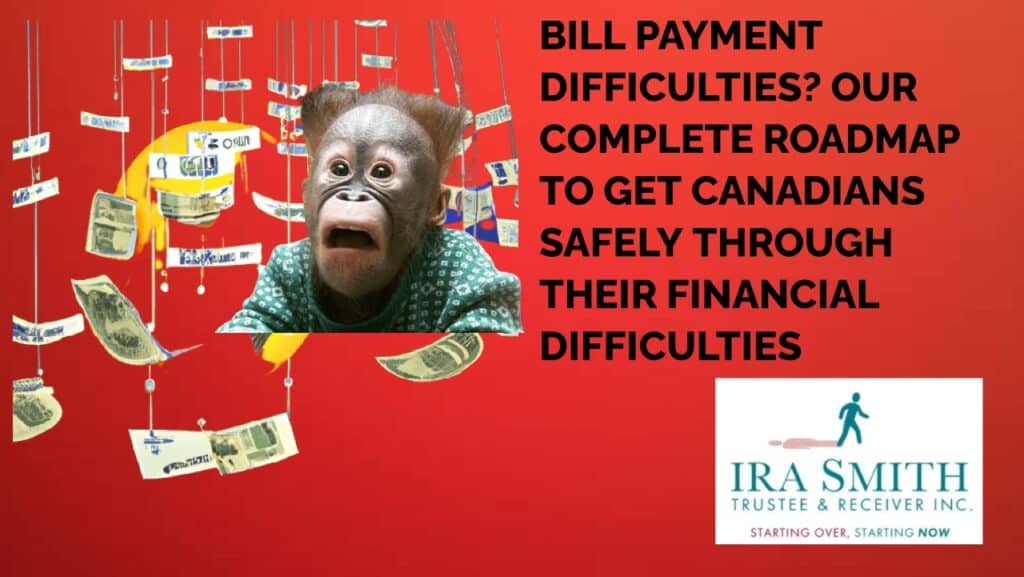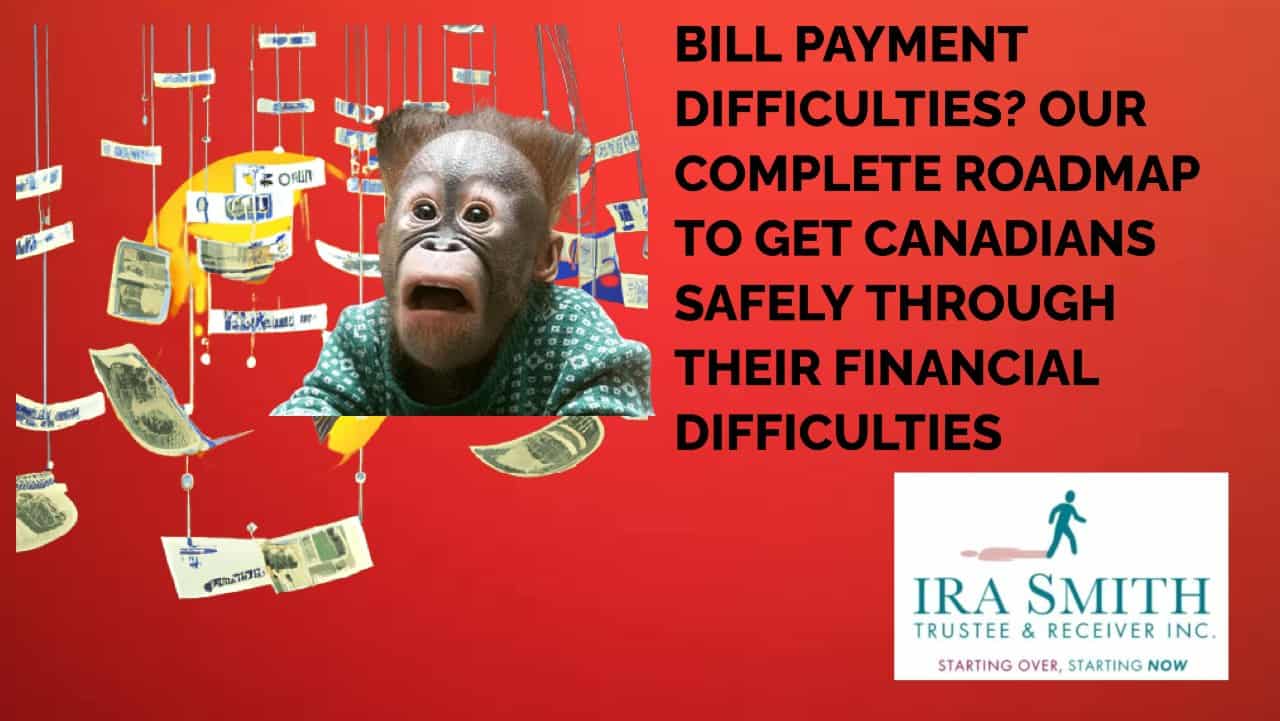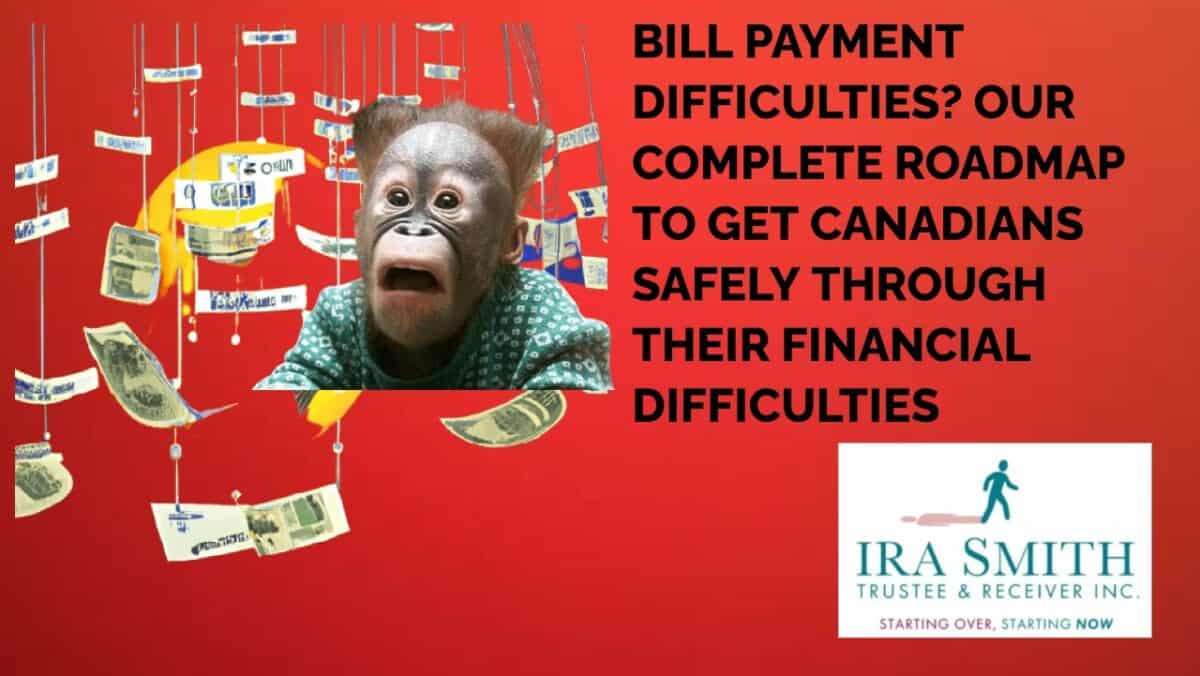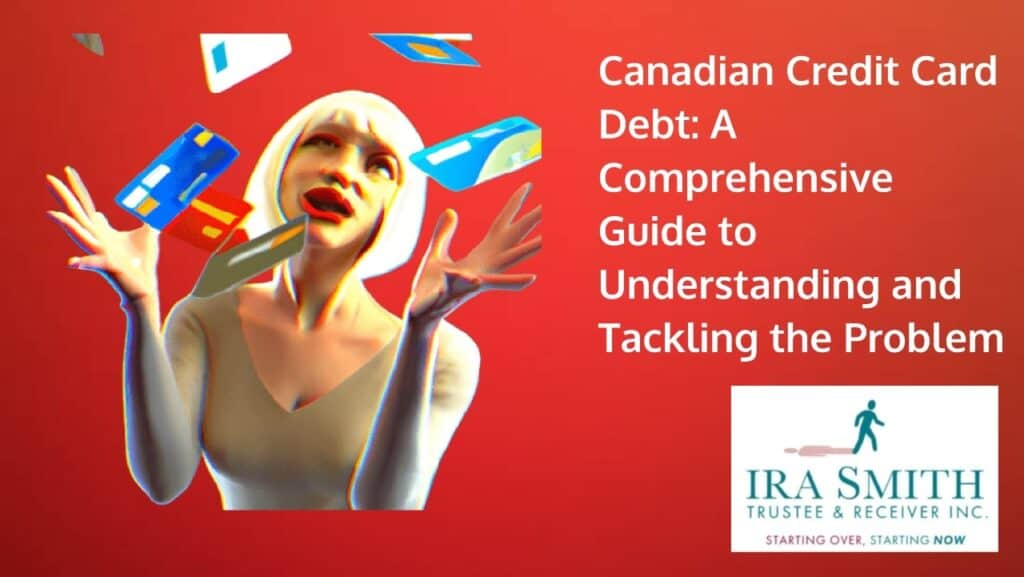Bill payment introduction
Today’s Brandon’s Blog discusses practical ways to take care of financial challenges connected to bill payment in Canada. As the economic climate develops and interest rates keep rising, it’s vital to have a trusted expenditure technique to adhere to. Current research from TransUnion, a Canadian credit bureau, highlights the significance of financial management.
According to the Q1 2023 Customer Pulse study by TransUnion, virtually one-third of Canadian homes checked are facing more difficult times with money, with the rising cost of living being the primary contributing factor.
It can be frustrating to always try to catch up to rising prices, particularly when faced with unanticipated financial setbacks. Juggling all your payments, such as utilities, rent, food and credit cards, can trigger anxiety and stress. Nonetheless, with the ideal knowledge and devices, it’s possible to get rid of these obstacles and reclaim control over your finances and also enhance your general well-being.
Join me as I check out the different techniques you can embrace to effectively manage your bills. I will provide you with detailed advice on developing efficient approaches to bill payment so you can stay clear of late payment penalties.
Financial stability incorporates more than just paying your bills on time. It involves creating healthy financial practices, boosting budgeting skills, and producing a solid foundation for future financial success. This Brandon’s Blog will certainly also delve into these aspects, supplying recommendations on just how to achieve lasting economic stability.
Whether you are a consumer struggling to keep current with all your regular monthly costs or an entrepreneur facing expense management challenges, this information is for you.
So, if you are ready to take control of your expenses and gain back financial stability, stay tuned and don’t go anywhere.
Understanding the challenges of bill payment
The Canadian economy is constantly evolving, influenced by both domestic and global factors. As we navigate through unprecedented times, understanding the current economic landscape in Canada is critical for individuals, businesses, and policymakers alike. Key components of the current Canadian economy, such as GDP growth, inflation, employment rates, and trade all influence how well off we feel. Layer on top of that the impact of the COVID-19 pandemic on the Canadian economy, and the measures that the government took to address the crisis.
All of this combined affects our comprehensive understanding of the state of the Canadian economy, and how it may affect your personal or professional life. Suffice it to say that economists do not agree on the current state of Canada’s economic landscape and whether or not the Bank of Canada should keep raising interest rates.
Canadians are not the only ones affected by bill payment problems. Here is a small sample of issues that were reported in the media last week:
- Twitter faces lawsuits over alleged non-payment for office services in four countries.
- New South Wales energy bill relief for struggling families trying to make regular payments.
- Australian Telcos must offer financial hardship assistance.
- Low-income Tulsa households are now eligible for federal assistance with their water bills and sewer bills.
- Millions of Aussies have been placing buy now, pay later (BNPL) payments ahead of their other monthly obligations, according to new research. Around two in five (43%) Australians used a BNPL account in the past six months, a Finder survey of 1,090 respondents revealed.
Bill payment problems can impact the financial security of individuals and their households. Failure to make on-time payments results in extra charges, which can cause serious emotional stress. In addition, missing out on payments will negatively influence your credit score.
For family members, bill payment issues can result in heightened tension as they try to manage their expenditures and make ends meet. This can cause relationship stress, as money worries are a usual reason for arguments.
To alleviate these concerns, households need to develop a spending plan to ensure that they can first understand what their income (net of tax obligations) is, as well as what their essential and non-essential expenses are. It is just after that can any individual appropriately understand exactly how to deal with bill payment concerns.
Identifying the root causes of bill payment issues
There can be many root causes of bill payment issues. Here are some usual ones:
Financial restrictions: Among the key factors for bill payment problems is financial problems. If an individual is facing financial restraints, they will struggle to have enough money to make all bill payments on time every month, resulting in postponed payments.
Lack of budgeting: Poor or no budgeting or financial planning can contribute to bill payment problems. If individuals don’t properly budget adequate funds for expenses or prioritize their expenditures correctly, they will struggle to pay their bills on time.
Unforeseen costs: Unanticipated costs, such as emergency vehicle repairs, can interrupt a person’s financial security and also make it meet all bill payment dates. These unanticipated situations can trigger short-term money strain.
Inadequate income: Insufficient income makes it impossible for individuals to cover their regular monthly costs. If somebody’s earnings are inadequate to satisfy their financial responsibilities, they will have bill payment problems.
Incorrect invoicing or disagreements: In some cases, bill payment issues result from mistakes in the invoices or disagreements regarding what the cost of a particular item should have been. This is the easiest one to fix, assuming you have proof that you have been improperly billed. This also assumes that you have enough cash on hand to immediately pay off the right amount owing.
Lack of organization: Poor financial habits or disorganization can add to bill payment issues. If people fail to keep track of their expenses, due dates, and what is owed, they might overlook or neglect to make timely payments.
Communication issues: Lack of clear and timely communication between service providers and customers can lead to payment problems. Misconceptions, hold-ups in getting bills, or failure to inform customers concerning when payment is expected can add to bill payment troubles.
Change in personal conditions: Life events such as job loss, divorce, or moving can disrupt a person’s financial security and lead to bill payment problems. Modifications in personal circumstances can cause what is hoped to be only temporary bill payment problems.
Procrastination or carelessness: Often, bill payment problems happen due to laziness or carelessness. Individuals might delay bill payments or neglect them totally, bringing about late payment fees. At its worst, this can lead to service disruptions.
It is very important to keep in mind that the root causes of bill payment problems can vary depending on a variety of issues. Addressing these reasons frequently calls for proactive financial planning, budgeting, proper communication and regular ongoing review to make sure that your bills are paid on schedule.
Strategies for effectively managing your bills
Over the years, I have written many articles on various strategies for taking charge of your finances to avoid financial problems. Most recently, it was discussed in Brandon’s Blog “UNDERSTANDING AND OVERCOMING FINANCIAL STRESS: A COMPREHENSIVE GUIDE TO GET FROM WORRIED TO WELL-PREPARED”.
Here are some strategies for helping with bill payments. The following list is not mutually exclusive:
Importance of budgeting in bill payment
Handling bill payments efficiently demands making use of budgeting, an essential tool. Budgeting offers individuals an extensive understanding of their earnings and expenses, enabling them to allot funds appropriately. By creating a budget, people can prioritize their expense repayments, making sure that essential costs are paid on time.
This technique does not just help in avoiding late payments, fees, as well as added interest charges. It also facilitates the identification of non-essential expenditures that can be lowered or gotten rid of entirely. This, in turn, lets you make the most of your funds for what is essential and what isn’t. Welcoming this proactive approach to financial planning is important for recovering your financial security.
Prioritizing bills and negotiating payment plans
Handling your funds properly includes the important job of prioritizing expenses and even negotiating extended payment plans with certain creditors to allow for reduced payments over time to pay off an outstanding balance in full. It’s important to recognize which costs hold the highest possible priority to prevent undesirable repercussions like late fees or a negative effect on your credit rating. Setting up an alternative payment plan with certain creditors may just be what is needed to give you some breathing room.
Once you’ve established what are the most essential expenses, participating in conversations with creditors and getting certain payment plan extensions will relieve your financial stress and anxiety. Clear communication with creditors is essential to finding remedies that benefit both of you. Being transparent about your financial constraints and actively looking for resolutions are very important actions to take. By prioritizing bills and masterfully discussing payment plans, individuals can reclaim control over their finances and stay away from more dangerous financial pitfalls.
Increase your income with a side gig to help with bill payment
It is critical to discover extra income possibilities if you come up short each month in your bill payment. Technical innovations and the surge of side gigs make it very common for people to supplement their income with a side gig. Examples of these alternate income opportunities include freelancing, online tutoring, and running an e-commerce site.
When considering different additional income opportunities, it is very important to examine one’s skills and interests to recognize suitable opportunities. Expanding income streams not only supplies security but also fosters personal development. By welcoming different revenue sources, people can take control of their financial future and chart a much more interesting career path.
Increase your financial literacy through local community resources
When dealing with difficulties with paying your bills, don’t overlook what may be available in your local community resources. There may be free or very low-cost help for you. Community centres regularly run programs or workshops on monetary management, budgeting, and financial literacy. Joining these programs can outfit people with the necessary skills to handle their bills efficiently and regain their financial confidence.
Moreover, social services may give financial help to those in need. By utilizing these resources, Canadians can get the essential support to overcome their bill payment obstacles to get into a better financial state. It is essential to make use of these local resources to develop a solid foundation for financial well-being.
Use technology to get the best cost savings
In today’s digital world, the application of modern technology like apps to save money has ended up being important for people. Price comparison tools and budgeting apps are valuable resources that make it easier than ever to monitor expenditures and make educated choices. These devices not only help recognize the very best offers, but they also supply information on your spending behaviours, letting you save substantial amounts of money and streamline your purchasing and spending patterns.
By staying updated with the huge array of available apps and modern technologies, people can remain competitive with up-to-date information on prices and spending patterns. Incorporating these devices into day-to-day routines and financial monitoring practices people can maximize cost savings and optimize financial outcomes in today’s vibrant marketplace.
Bill payment: Additional resources and support for Canadians facing bill payment challenges
For those whose financial situation is direr and they need more than just implementing the above tips, I have written many of Brandon’s Blogs incorporating the topics such as:
- Common traps to avoid such as payday loans, credit card debt, impulse spending and lack of financial education or financial literacy.
- Debt consolidation
- Debt settlement
- Credit counselling
- Consumer proposal
- Bankruptcy
I won’t repeat them here but you do not have to go any further than last week’s Brandon’s Blog: “DEBT RELIEF OPTIONS: OUR COMPREHENSIVE GUIDE FOR IDENTIFYING RELIABLE DEBT ADVICE” to read all about it.
Overcoming bill payment challenges requires effective strategies and practical tips. It is crucial to manage bills efficiently to regain financial stability. By prioritizing expenses, creating a budget, and exploring payment assistance programs, Canadians can overcome their bill payment difficulties. It is also important to communicate with creditors and explore alternative payment options. Seeking professional advice and support from financial advisors or credit counselling agencies can provide valuable guidance during this process. With determination and proper financial management, Canadians can overcome their bill payment challenges and work towards a more stable financial future.
Encouragement and support for Canadians facing bill payment difficulties
When people encounter difficulties with bill payments, it is important to employ reliable methods and functional tips to deal with those circumstances. Proper management of expenses plays a crucial function in bringing back financial security. Canadians can manage their bills successfully by prioritizing expenses, developing a budget, and exploring other assistance programs available to them.
Furthermore, open interaction with creditors, as well as the exploration of different repayment alternatives, are essential steps to take. Seeking specialist advice as well as support from financial and debt experts can provide beneficial advice throughout. With persistence as well as correct financial planning, Canadians can overcome their bill payment obstacles and work in the direction of a much more safe and more secure financial future.
Bill payment conclusion
I hope you enjoyed this bill payment Brandon’s Blog. Problems with making ends meet are a growing concern in Canada, affecting individuals of all ages and income levels.
Creating a solid financial plan can be the key to unlocking a brighter and more prosperous future. By taking control of your finances, you can prioritize your expenses, set clear financial goals, and build a strong foundation for your dreams to come true. With the right mindset and approach, financial planning can empower you to regain control, eliminate this issue as a source of stress in your life and find peace of mind.
Individuals must take proactive measures to address financial difficulties and promptly seek assistance when necessary. It is crucial to recognize that financial stress is a prevalent concern and seeking help is a demonstration of fortitude, rather than vulnerability. Should you encounter challenges in managing your finances and find yourself burdened by stress, do not delay in pursuing aid.
Revenue and cash flow shortages are critical issues facing people, entrepreneurs and their companies and businesses that are in financial distress. Are you now worried about just how you or your business are going to survive? Are you worried about what your fiduciary obligations are and not sure if the decisions you are about to make are the correct ones to avoid personal liability? Those concerns are obviously on your mind.
The Ira Smith Team understands these concerns. More significantly, we know the requirements of the business owner or the individual that has way too much financial debt. You are trying to manage these difficult financial problems and you are understandably anxious.
It is not your fault you can’t fix this problem on your own and it does not mean that you are a bad person. The pandemic has thrown everyone a curveball. We have not been trained to deal with this. You have only been taught the old ways. The old ways do not work anymore. The Ira Smith Team uses innovative and cutting-edge methodologies, to adeptly navigate you through the intricacies of your financial challenges, ensuring a resolution to your debt-related predicaments without resorting to the rigours of the bankruptcy process. We can get you debt relief now!
We have helped many entrepreneurs and their insolvent companies who thought that consulting with a Trustee and receiver meant their company would go bankrupt. On the contrary. We helped turn their companies around through financial restructuring.
We look at your whole circumstance and design a strategy that is as distinct as you are. We take the load off of your shoulders as part of the debt settlement strategy we will draft just for you.
The Ira Smith Trustee & Receiver Inc. team understands that people facing money problems require a lifeline. That is why we can establish a restructuring procedure for you and end the discomfort you feel.
Call us now for a no-cost consultation. We will listen to the unique issues facing you and provide you with practical and actionable ideas you can implement right away to end the pain points in your life, Starting Over, Starting Now.










